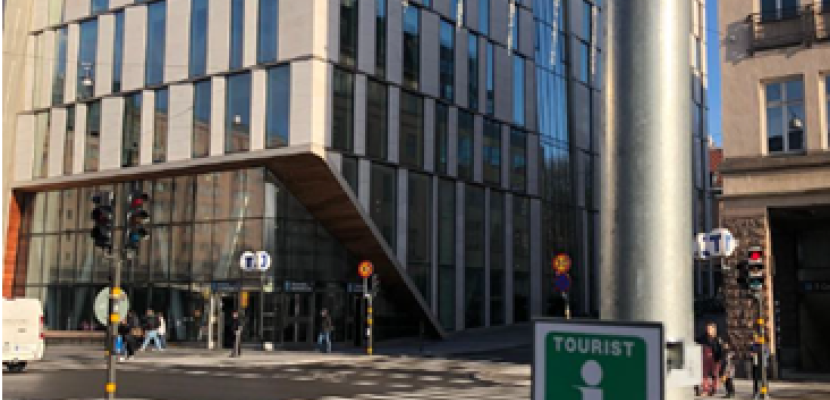
Tourist information signs with QR codes

About this good practice
The closure of physical tourist offices in 2019 and during the pandemic made it difficult for visitors to access authorised tourist information. In response, the City of Stockholm Traffic Office installed wayfinding signs in English around the city. In 2022, Stockholm Business Region and the City worked together to install additional signs at 10 wayfinding signs; the additional information consisted of the internationally-known green tourist information “I” and QR codes that, when used, direct users to authorised tourist information.
The signs were viewed as a resource-efficient means of improving access to geographically-relevant tourist information in the urban area, without disturbing the urban environment and using a simple format accessible to most visitors. Tourists, along with the stakeholders located in the areas tourists visit, are the primary beneficiaries of the signs. The signs have been well-used and by summer 2024 there were 25 signs, providing information on tourist destinations, web guides, events and more. The signs are mainly used by tourists, rather than residents, and data gathered helps the city understand patterns of tourist behaviour, e.g. which locations are well-used or perceived as confusing, etc. Annual monitoring takes place to ensure signs are maintained and located in relevant locations, along with analysis of the data gathered. The good practice is showcased within the TAAS project, which aims to accelerate sustainable tourism digitalization.
Resources needed
The project has mainly involved working time to start the process, and to enable annual monitoring and updates. Direct costs occurred in the form of production costs for design and print, IT costs for QR codes and production of reports, plus purchase and installation of metal signs (total <€10,000).
Evidence of success
During the first 18 months around 2000 users accessed the signs, indicating that there is demand for a physical complement that enables access to digital services. The process has also resulted in significant learning for Stockholm Business Region regarding information provision in the public realm; a range of “spin-off” activities have been developed to provide additional QR-code services to tourists on e.g. waste bins (linking to events calendars).
Potential for learning or transfer
This practice is a relatively simple and resource-efficient way to link the physical and digital worlds and provide information to tourists that is directly linked to their location and needs. The approach can be developed to fulfil specific aims (e.g. guide visitors to alternative locations to avoid congestion) or needs. Stockholm Business Region has received a range of requests for information from stakeholders in other countries, suggesting the approach is ripe for transfer. The practice can be adapted to various urban settings, particularly in cities that face similar challenges regarding tourist information access and can be tailored to meet specific objectives, e.g. directing visitors to less congested areas. To do this requires cooperation between the Destination Management Organization and city traffic planners, access to mobile internet, and a long-term commitment to maintain the service and ensure signs remain at desired locations.
Further information
Good practice owner
You can contact the good practice owner below for more detailed information.
